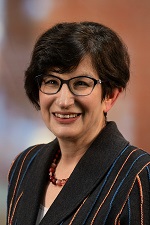ARCHIVED: NOT AVAILABLE FOR CREDIT
Challenges and Rewards of AI Software Applications in Pathology
The emergence of artificial intelligence (AI) and computational pathology provides new tools to bring automation to the practice of anatomic pathology. With the recent FDA approval of the first algorithm to determine the presence of prostate cancer in prostate needle biopsies, computational pathology has come a step closer for actual utilization by pathologists. To deploy algorithms in clinical practice requires a large infrastructure in digital pathology and a change in operational workflows. I will discuss the key elements that are needed for digital sign-out and present data on clinical implementation of a commercial algorithm for evaluation of H&E slides and calibration of a commercial algorithm for PD-L1. I will also briefly discuss regulatory considerations of digital pathology. Altogether, examples will be used to illustrate the state of the art of digital and computational pathology and the challenges that exist for clinical implementation of this new technology.
Originally presented on February 9, 2022, in Park City, Utah.
Lecture Presenter
 | Beatrice Knudsen, MD, PhD Professor of Pathology |
Dr. Beatrice Knudsen is a medical director of computational pathology at ARUP Laboratories and a professor of pathology at the University of Utah. Dr. Knudsen received both her doctorate and medical degrees from Weill Cornell Medical School. She completed a residency at the New York Hospital before completing a laboratory research fellowship at Rockefeller University. Dr. Knudsen is board certified and the recipient of the Creativity Award from the Prostate Cancer Foundation. She specializes in genitourinary pathology and her research interests include mechanisms of cancer metastases and biomarker development.
Objectives
After this presentation, participants will be able to:
- Discuss regulatory considerations of digital pathology
- Describe the overall architecture of digital pathology
- Discuss key issues for implementation of digital and computational pathology in the practice of pathology
Sponsored by:
University of Utah School of Medicine, Department of Pathology, and ARUP Laboratories
 Site Search
Site Search

